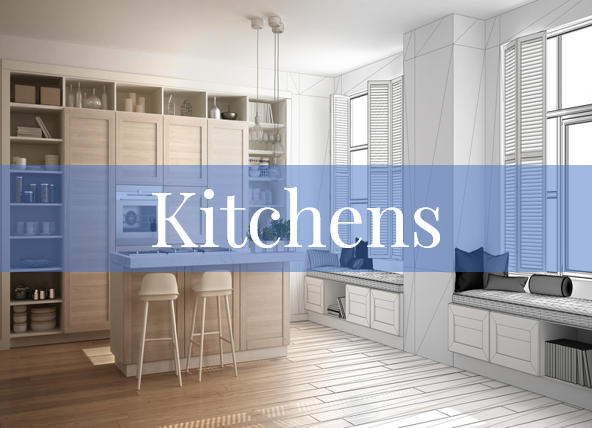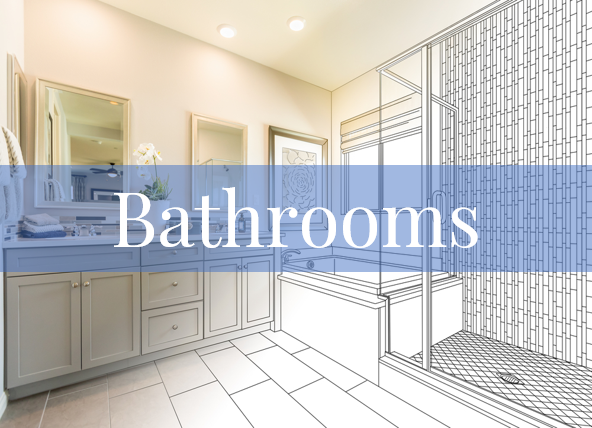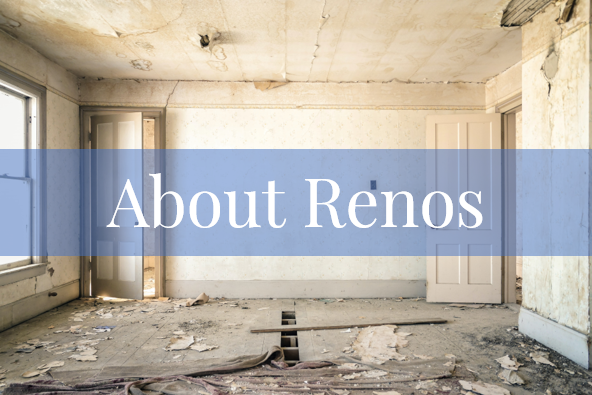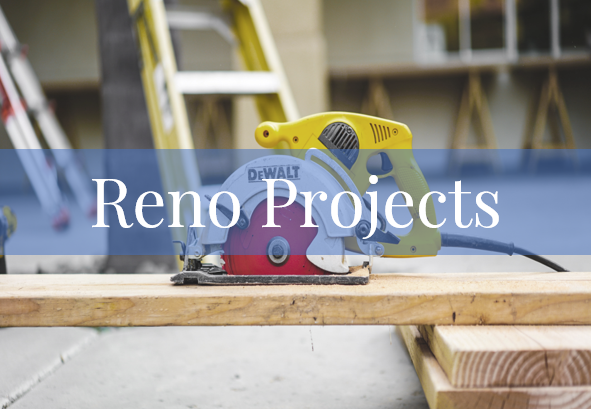10 Tips for a Pet-Friendly Renovation
/Those of us who have pets know they hold a very special place in our hearts. We may complain about vacuuming up the pet fur or having to take the dog out for a walk at 11 p.m., but we all know we couldn’t live without them. They leave paw prints on our hearts forever and always.
It is for this reason that we always encourage our clients with pets to consider them in their renovation plans. Pets are part of the household. Their comfort needs to be considered not only during the renovation itself, but we also need to think about how the newly renovated space can be designed to include some of our pets’ needs. We explore all of that and more in this article.
Prefer to listen?
During the renovation process
Most renovations involve one or more workers coming into the home for anywhere from one day to one month or even longer. Just having strangers in the house can upset some pets. The normal hustle and bustle of a typical work day on a renovation site will be out of the ordinary for your four-legged friends. They may show signs of anxiety, fear, or stress as they adjust to suddenly having new people in the house.
1. Gently introduce the contractor to your pets
There are a few ways to deal with this type of behaviour. First, talk to your contractor and let them know that you have pets. Ask if the workers can take a few minutes when they first arrive on the first day to talk quietly and politely to your pets and show them that they have nothing to fear. By making their first appearance at your home a friendly one, it might help your pet stay a bit calmer once the hustle and bustle starts.
If you anticipate that your pet might have a lot of anxiety when workers are in your home, talk to your vet. There may be some medication or supplements (e.g., Feliway for cats) that your pet can take to help with their stress levels.
2. Consider daycare or play dates with a friend
If you are really concerned about the stress levels of your pets, consider daycare. There are many doggie daycare centres available that will happily help out. We had one client we worked for in Ashburn. Her dog, Molly, loved all of our workers, and we enjoyed playing with her for a few minutes whenever we arrived. However, for unknown reasons, she just hated one of our team members and wouldn’t even let him in the house. Our clients treated Molly to a day program when Craig was working on site, and Molly had a blast while she was there!
You might also consider having your pets stay with some friends or family members while the renovation is going on. If your dog or cat has a friend or family member that they are particularly fond of, they might actually enjoy the 'vacation' away from home.
3. Set the ground rules with the contractor
If you plan on keeping your pets at home during your renovation and letting them roam freely throughout the house, make sure your contractor knows that as well, particularly if your pet is an indoor pet. When workers are carrying materials in and out of your home, doors are often left open for extended periods of time, and it would be all too easy for pets to get out. The last thing you want is to start a neighbourhood search for your lost cat or dog.
4. Keep your pets in their favourite locations in the home
If your pets have a favourite spot in the house where they like to curl up and sleep or sit with you, you might want to consider closing off that area from the renovation and keeping your pets confined to that area. If your pet already considers it a safe and happy place, it will help ease the stress of the renovation to spend their time there.
5. It’s not always a frightening experience
With everything I’ve just written, you might be thinking that renovations are a nightmare for pets. That’s not necessarily the case. About 80% of our clients have pets, and we are a very pet-friendly company. All of our team members have pets and have been trained on how to deal with pets in the home during renovations. We even let dogs out for nature calls and have even fed or medicated cats and dogs that needed it while we were on site and their owners were at work. We’re respectful of our clients’ pets, and we see them as members of the household. 95% of the time, there are never problems, and our clients’ pets are excited to have us there.
However, that’s not always the case. Our company is full of pet owners and pet-friendly workers, but not all companies are. Some people don’t like pets, or they might be a dog person and not a cat person, or vice versa. Some people might not like working with dogs jumping all over them and might react aggressively as a result. As a pet owner, you have to be prepared for any scenario in order to keep your pets safe.
If your pets are okay with the contractor and the renovations, let them be part of the process. But be sure you keep them away from the direct work area where the renovations are taking place because there could be compounds, mixtures, solvents, tools, loose nails, or screws on the ground that could harm your four-legged family members.
Learn more by clicking here: How to Have a Stress-Free Renovation
6. Ask your contractor the right questions
The best advice I can give you is to talk to your contractor about the safety and security of your pets. Ask the contractor if any of the workers are trained or experienced in working around pets. Ask what their policy is regarding pets in the home. Be sure to be upfront about where your pets will be located during the renovation and what your preferences and rules are. If your kitty is an indoor kitty and is standing at the door looking outside, you want to ensure that one of the workers doesn’t let the kitty outside, thinking it’s OK to do so.
If your pet likes treats, give the renovation workers some treats to offer to your cat or dog when they first arrive each day. This might help your pet associate the workers with a pleasant experience.
7. Plan ahead for feedings and sleep time
For some renovations, you may need to feed your pets in a different location. If they are used to eating their meals in the kitchen and you’re getting a kitchen renovation done, dinner time might be in the living room during the project. About a week before the renovation is scheduled to start, move their food bowls to the new location to get them used to eating elsewhere before the commotion of the renovation starts.
If your pets have a blanket or bed in the area where the renovations are going to take place, move the bed or blanket to a new location 1-2 weeks prior to the start of the reno. This will help ensure they are already familiar with their new place to sleep before the workers arrive.
8. The best flooring choices
Renovation designs need to consider function and flow, combined with design and aesthetics. However, if you’ve got a pet, this is the perfect time to consider their needs as well.
For example, your flooring choices really need to be mindful of pet claws and use. Hardwood floors may not be the best choice if you have large dogs with big claws who like to run around a lot. The damage they cause may require flooring replacement in a few years.
We highly recommend vinyl plank flooring for pets. Not only is it waterproof for accidents of any kind (pet or human), it is highly durable and can withstand pet claws quite well. Tile is also a great option for pets, but it can be cold and sometimes slippery. Adding floor heat not only addresses the cold issue, but it also becomes a wonderfully cozy place for them to sleep.
Although carpet is warm, fuzzy, and comfortable for your pet, when accidents or vomiting occur, you’ve got stains to deal with. If you do opt for carpet, talk to your flooring representative to select a stain-resistant one.
9. Feeding stations
If you’re doing a kitchen or laundry room renovation, you might want to consider incorporating a feeding station for your pets. This can easily be done in one of the base cabinets. Eliminate the door from the cabinet, keep the 4" kickplate, and cut two holes, one for the food bowl to slide into and one for the water bowl. You can even tile the inside of the cabinet to make splashes of water or flicks of food easy to clean up. Or consider putting the bowls on a pull-out so they can pull out for ease of use and then slide back in when the puppy or kitty are done.
Make sure you plan a spot to store their food, medications, leashes, brushes, etc. You can incorporate this into a pull-out base cabinet in your kitchen or a pull-out pantry. Think about what flows best with the space.
10. Dog Showers
If you’ve got dogs that typically get bathed a lot, now’s the time to consider designing a dog wash station within your laundry or mud room renovation. We’re in the process of doing this for our client in Bowmanville. The dog shower is just inside the back door, which is where the dogs always come in from their daily walks. We built the dog wash as a raised area to make it easier on our client’s back when bathing them. We built custom stairs for the dogs to climb to get into the shower. The stairs are on wheels and will be stored under the dog wash. A niche was installed in the walls of the shower to hold the dog shampoo.
BONUS TIP: Banquettes
If you’re having renovation work done in your living room, family room, or dining room and have room for a banquette, this can be a great option for additional seating when you’re having a party but can also double as a great spot for your pet to sit and look out a window. We’ve done this many times for our clients, and their dogs and cats love these new cozy places to sleep.
Here at Multi Trade Building Services, we adore pets and even donate 50% of our profits to help animals in need in Durham Region. Our team members are avid pet parents and love meeting the pets of our clients. Make sure you hire a renovation team that will respect and care for your pets just as you do. Also, be sure to consider your pets’ needs when designing your next renovation.
If you want to work with our team to ensure the safety of your pet, click here to book your free, no obligation quotation.





























